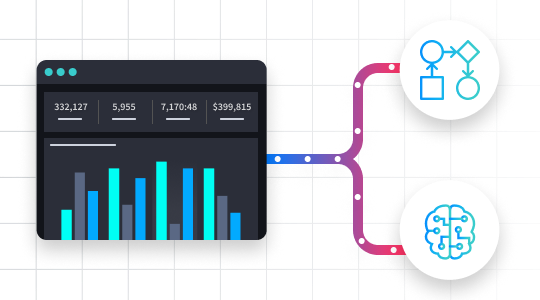How to Fix Failing GRC Compliance: The Role of AI Automation
Do compliance audits feel like a fire drill you can’t escape? The scramble for evidence. The endless back-and-forth between GRC and security teams. The fear of missing something that could cost you BIG. It’s pure chaos without the necessary tools you need, and it’s eating up your time, draining your team, and exposing your business to risk.
In our latest research report, GRC Chaos: The High Price of Audits and Non-Compliance, we uncovered a harsh truth that many organizations are already experiencing: Governance, Risk, and Compliance (GRC) processes aren’t functioning as they should, and the cost of this dysfunction is too high to ignore.
Keep reading to dive into the findings and, more importantly, learn how to fix it.
How Siloed Teams and Missed Audits Create Business Risk
When we asked security and GRC leaders, across the United States and the United Kingdom, about the state of collaboration during compliance audits, their answers revealed deep and persistent disconnects:
- 90% are concerned about poor collaboration between security and GRC.
- The top collaboration challenges are differing priorities, communication gaps, and a misaligned understanding of audit requirements.
- These issues stall audits, create risk exposure, and drain critical resources.
When compliance fails, the fallout is steep:
- Financial penalties, security breaches, and reputational damage top the list of fears.
- Leaders also worry about legal action, operational disruptions, increased audit scrutiny, and a loss of customer trust.
This isn’t just a “GRC problem.” It’s a business problem that puts your organization’s bottom line, brand, and resilience at risk.
The Disconnect Between GRC and Security Teams
Too often, security and GRC operate in silos. While both care deeply about protecting the business, they approach problems from different angles, with different tools, timelines, and definitions of success.
- Security teams focus on preventing, detecting, and responding to threats.
- GRC teams focus on controls, documentation, and regulatory alignment.
Without shared visibility and a common operational language, even well-meaning teams fall into friction points that slow down audits and escalate risk.
The True Cost of Compliance Chaos
Fragmented tools. Manual processes. Disconnected teams. These are the hallmarks of GRC chaos, and they directly contribute to compliance failures that cost more than just fines:
- 39% fear financial penalties.
- 36% worry about the increased risk of breaches.
- 36% cite reputational harm as a major concern.
However, perhaps the most significant cost is the opportunity loss when GRC is treated as a box-checking exercise rather than a critical component of the organization’s security and risk strategy.
4 Ways to Bring Order to GRC Chaos
If your organization is ready to move from reactive compliance to proactive control, here are five ways to start:
1. Break Down Silos with Shared Visibility
Deploy a platform that connects GRC and security teams through a unified view of risks, evidence, and audit workflows. With Swimlane, both teams can collaborate in real-time, reducing duplicate work and ensuring that all requirements are met.
2. Streamline Evidence Collection and Reporting
Manual evidence gathering slows audits and invites human error. Use AI to continuously collect, document, and report on compliance activities, so audits don’t become last-minute scrambles.
3. Orchestrate Cross-Team Collaboration with Case Management
Bring together stakeholders, assign responsibilities, and track progress with centralized case management. Swimlane’s case-centric approach keeps GRC, security, and business units aligned on every compliance initiative.
4. Gain Real-Time Insights with AI-Augmented Dashboards
Don’t wait for audits to discover gaps. Leverage real-time analytics and dashboards to monitor compliance posture in real time, so you can identify risks, resolve issues, and stay ahead of regulatory demands.
It’s Time to Transform Compliance from Chaos to Control
Repeat after me… “No more spreadsheets!”
The future of GRC and compliance isn’t more checklists. It’s shared visibility, intelligent automation, and collaboration without friction. The Swimlane Compliance Audit Readiness (CAR) solution, powered by Swimlane Turbine, helps GRC teams streamline audits and evidence gathering when managing multiple frameworks.
With Swimlane, you will replace the chaos with clarity, and turn compliance from a risk into a competitive advantage.
TL;DR: How to Fix Failing GRC Compliance with AI Automation
TL;DR: Compliance audits shouldn’t feel like a constant fire drill, but for most organizations, they do. New research reveals deep collaboration gaps between GRC and security teams, leading to missed audits, wasted resources, and costly risks. Swimlane’s Compliance Audit Readiness (CAR) solution brings order to the chaos. By automating evidence collection, centralizing case management, and enabling real-time visibility, organizations can shift from reactive box-checking to proactive, AI-powered compliance.

Request a demo
If you haven’t had the chance to explore Swimlane Turbine yet, request a demo.


